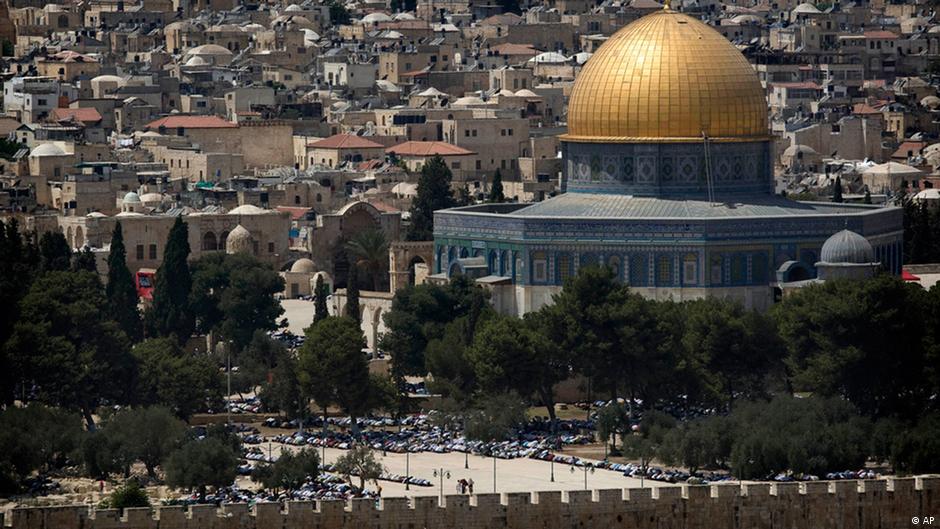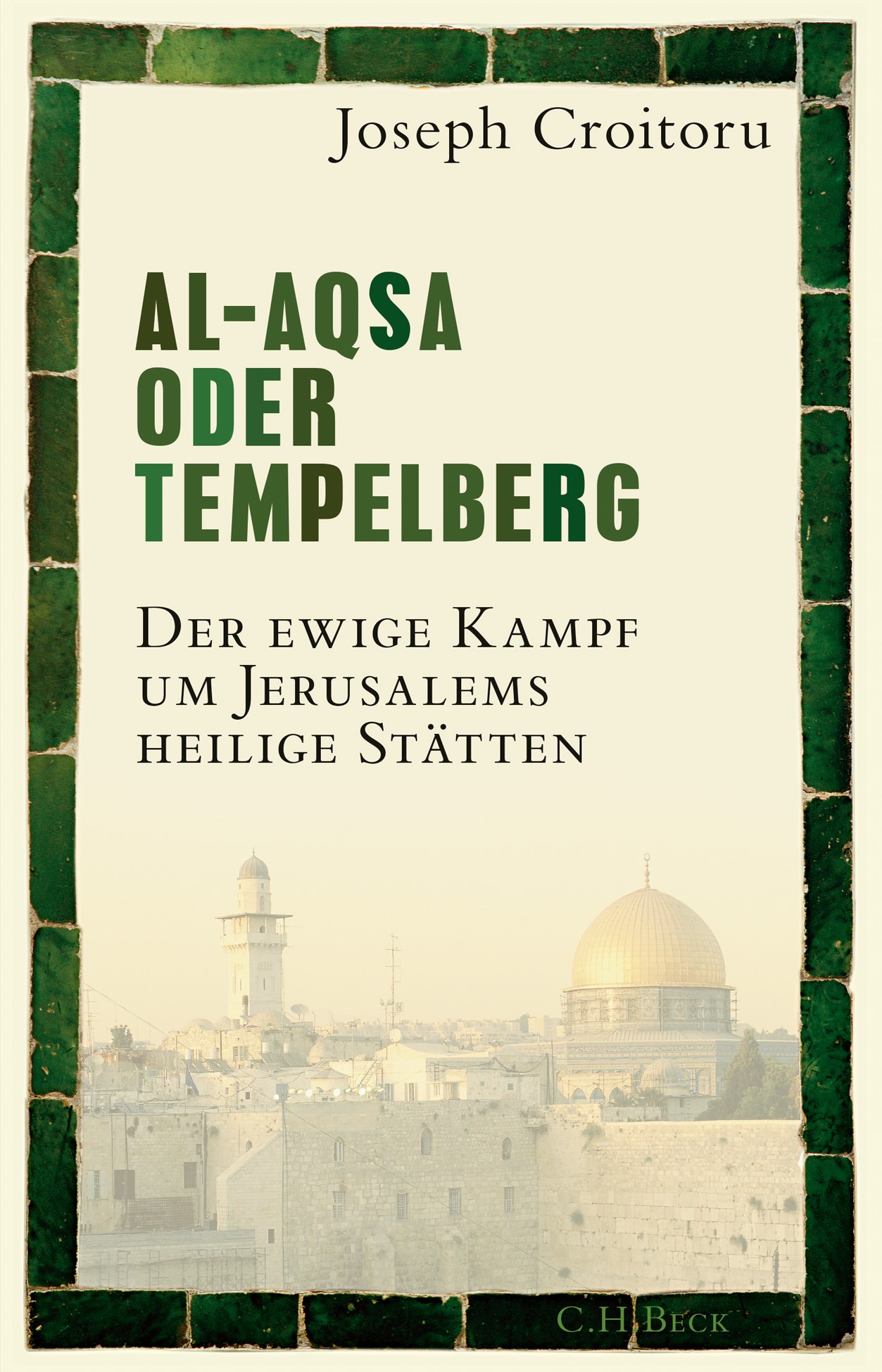Zeroing in on the Middle East conflict

In his new book on the "eternal struggle" for Jerusalem's holy sites, Al Aqsa oder Tempelberg (Al-Aqsa or Temple Mount), the German-Israeli historian and journalist Joseph Croitoru warns right at the outset that "a storm is brewing" in the Temple Mount conflict and that the signs are more ominous than ever before. In short, Croitoru is not very optimistic about this struggle, which is one of the key flashpoints in the Israeli-Palestinian conflict. Indeed, what goes on in the area between the Wailing Wall and the Dome of the Rock is like the Middle East Conflict in miniature.
In the same way that the sun's rays are concentrated on a small space by a burning glass, the shifting balance of power in the region down through the centuries and, since the late nineteenth century, the ambitions of two rival national movements – Zionist and Arab Palestinian – have been concentrated on a 14-hectare-large area in the Old City of Jerusalem that is steeped in history. Of the two, only the Zionist national movement has succeeded in founding its own state. And it is this dominance that has shaped recent developments on the Temple Mount.
When Israel occupied East Jerusalem during the Six-Day War in 1967, it assumed control of the Old City, and the government set about implementing decisions that would change the face of the Old City forever. For example, in order to make it easier to access the Wailing Wall, which had previously been at the end of a cul-de-sac, the government moved quickly to have the historical Moroccan Quarter demolished, thereby creating the large square in front of the Wailing Wall that we see today. If it had been up to the military rabbi Schlomo Goren, the army would have demolished the mosques on the Temple Mount as well. Goren was an Orthodox Jew and a Messianic zealot who saw the victory of the Israeli army as a sign from God.
The complex of the Dome of the Rock, Al-Aqsa Mosque and Wailing Wall is the most mysterious and controversial holy place in the world

Defence Minister Moshe Dayan, however, had other plans. He decided that the Jerusalem Islamic Waqf, which had governed the holy sites since the days of the British mandate for Palestine and was funded by Jordan, would continue to manage these sites.
He also decreed that Jewish visitors were not permitted to pray or carry out any ritual acts in the area around the mosque. Israel's predominantly Orthodox Chief Rabbinate welcomed this step.
To this day, the rabbinate adopts the stance that Jews should not even set foot on the mount until the temple has been rebuilt, emphasising at the same time that only God can rebuild the temple.
National-religious extremists see things very differently. Jewish terrorists have in the past attempted to blow up the Dome of the Rock. Today, there are about 20 fundamentalist groups who want to rebuild Herod's Temple, which was destroyed by the Romans.
They go by such names as "Movement of the Temple Mount Faithful", "Friends of the Temple" and "The Priestly Crown". Some of them even run Talmudic schools and synagogues in the Old City.
Today, small groups of devout nationalists circle the Al-Aqsa Mosque and the Dome of the Rock every day to emphasise their claim to this holy site.
It is said that the first Jewish Temple stood on the Temple Mount; it was built by King Solomon and destroyed by the Babylonians. The second temple on the site was built by King Herod the Great and was destroyed by the Romans in the year 70 AD. Devout Jews consider the Wailing Wall to be a remnant of the old temple and, therefore, a holy site.
Interestingly, however, it was only in the sixteenth century, in the early Ottoman era, that it became a place of worship. It was then made a national symbol of the Zionist movement in the nineteenth century. In response, the Al-Aqsa mosque increasingly became the focus of the nascent Palestinian national movement. For devout Muslims, it is the third most important site in Islam after Mecca and Medina because it is said that during his Night Journey, Muhammad travelled there and ascended into the heavens.
In the 1920s, the then grand mufti of Jerusalem, Amin El-Husseini, sought to mobilise religious feelings in particular among Arab Muslims worldwide, in order to win over people willing to fight for the Palestinian cause. After the Six-Day War, when East Jerusalem came under Israeli control, the secular PLO made it its stated aim to protect the holy sites of Islam and sought to use the venerated position of Jerusalem in Islam to further its cause.
It received support in this endeavour from Cairo and Saudi Arabia and later, after the Islamic Revolution, from Iran too. But a PLO competitor emerged in the shape of the Islamist Hamas, which was founded in 1988. Hamas put the religious motif right at the heart of its struggle. It even put the Dome on the Rock in the centre of its emblem, flanking it with two crossed swords and Palestinian flags.
[embed:render:embedded:node:27989]
At the start of the new millennium, the Temple Mount conflict flared up again. When the then leader of the opposition, hardliner Ariel Sharon, visited the Temple Mount surrounded by bodyguards on 28 September 2000, the Palestinians saw it as a demonstration of power.
The bloody revolt that followed went down in history as the Al-Aqsa intifada. It cost thousands of lives and brought the peace process to a halt and Ariel Sharon to power. Ever since, Israel been using its strength and irrevocably changing the face of the territories with the Gaza blockade and the building of the barrier and a growing number of settlements in the West Bank.
It is now almost routine for national-religious politicians to follow Sharon's example and visit the Temple Mount, says Croitoru. The stream of Jewish pilgrims has also increased considerably over the past decade. Muslim protests, on the other hand, have been stopped, and the Waqf has gradually been stripped of its power as a supervisory authority.
Today, the Israeli police ensures that pilgrims also have access to the site – even on Islamic holy days – and are allowed to pray quietly there. Croitoru's recounting of these developments is as gripping as any crime novel.
Palestinian Muslims are afraid that the site could soon be divided up between Jews and Muslims, as is the case at the tomb of the patriarch Abraham in Hebron. The influence on Israeli politics of the radical Temple Mount activists – who want to see just such an arrangement come into effect – has certainly increased dramatically over the last ten years.
It is only a question of time before the fight for the Temple Mount flares up once again. Peace is not to be expected there any time soon.
© Qantara.de 2021
Translated from the German by Aingeal Flanagan